Joe Kirkendall
Music Producer
Mellow side of Grime
For my final project I decided to change my idea from the initial study of the genre Grime as a whole, to focus mainly on the resurgence of Grime in recent years labelled ‘Mellow Grime’. I felt that this was more of a topical subject to explore, as I felt I was part of this scene too.
I have always been interested in Grime music from my early teens; I felt that the boisterous vibe of early pirate radio sets paired with a range of different MCs characters always appealed to me as unique. It is undeniably British, but mixed with the influence of Jamaican genres too, like Jungle and Dancehall. Numerous elements of different genres were integrated to create the ‘Grime sound’. The lyrical tone of UK Garage and the rhythm of beats from Drum and Bass and Dancehall. This hybridisation united a lot of different music scenes, which allowed the genre to spread all around the country. Unfortunately Grime never gained the same attention worldwide, other popular genres of UK music have faced the same issue.
Grime music has always been about community and this started with pirate radio. “In its early days grime really was a scene, with its own institutions and infrastructure, friendships and rivalries, independent record labels and shops, as well as the pirate stations. It was also a community, in which the (mostly teenage) MCs and DJs all knew each other: if not from school, from youth clubs or just from hanging around the local area, then through ‘doing music’. Their rejection by the older, more refined, aspirational and grown-up UK garage scene forged a unique camaraderie, and drove the music to new heights of innovation - the competitive bravado forcing MCS to keep writing new, bolder, better lyrics” Hancox, D (2019)
Pirate radio and ‘sets’ made grime what it is today. The main pirate stations that played Grime music were Deja Vu, Major FM, Delight FM, and Rinse FM, Freeze 92.7, and Mission FM. Pirate stations were vital to start-up MCs success. This was because usually numerous MCs would squeeze into one cramped room and they would all get the chance to rap over the beats, usually spitting basic but catchy 16 or 32 bar lyrics. Once Grime grew in popularity, stations like BBC Radio 1 and Kiss 100 played Grime as it had close ties with Garage music at the time as sonically they are similar.
Dan Hancox explains in his book ‘Inner City Pressure: The Story of Grime’, that one of the figureheads of the genre, Wiley (who’s known as the Godfather of Grime), is a manic enthusiast of the genre who always quintessentially defined the genre by his lyrical content. Wiley’s flow was skittish and embodied the practice of grime MCing to its finest degree:-
“I’m futuristic, quantum leaping
There’s no defeating E3 tiger
See me creep on the riddim like a spider
Kill them with a 16 liner”.
Grime ‘spitting’ is twice the speed of US-style rap: typically, you just had 16 bars to show your skills (or 21 seconds, in So Solid Crew’s case), before passing the mic to the next MC – “it is the most thrilling, exhausting, ADHD onslaught of a genre: a tension headache you can dance to” says Hancox. The first Grime track is a debatable one but So Solid Crew’s ‘Dilemma’ is usually recognised as the first ever Grime track, but in my opinion it is ‘Eskimo’ by Wiley as it embodies that ‘Grimey’ sound that is so valuable to the first tracks in the genre. Wiley’s impact on the genre is huge and he is rightly regarded as the Godfather of Grime. More honourable names to mention other than Wiley who heavily impacted the sound are Skepta, Dizzee Rascal, and D Double E. All three of these artists could easily be regarded as the greatest Grime artists of all time but that conversation is still ongoing.
From Grimes peak in the early to mid noughties, it slowly declined as most Grime artists started doing Pop music to make money as Grime typically did not sell because it was not radio/chart friendly. Grime had a mini revival with Skepta’s movement ‘Tracksuit Mafia’ where he released ‘That’s Not Me’, a song where he highlights that appearing American and wearing brands like Gucci is not the real him. Skepta embracing his London background created a massive tidal wave of similar songs and put Grime right back at the front of the top genres of the country. This new revival of the sound introduced artists like Stormzy, AJ Tracey, and YGG. This resurgence was short lived though, as the genre ‘Drill’ took over in the popularity race and a lot of artists similarly did what the older artists of Grime once did, took to doing Pop music or just disappearing completely.
With no new Grime artists appearing, people did start to question if ‘Grime is dead?’. The lack of no new artists in the genre made people go back and edit old Grime freestyles that were legendary in the scene, most famously Wiley, Skepta, and Wretch 32’s movement DVD freestyles. All these freestyles were originally posted by the channel ‘RiskyRoadz’. Risky Roadz was created by Roony Keefe who followed around grime artists with a VCR camera and made the footage into a collection of videos. His main video he made was ‘The Movement Documentary’ which was initially released on DVD in 2008 but then later rereleased in HD quality on YouTube in 2015.
Wiley & Skepta Movement DVD Freestyle (HQ)
Different artists like Douvelle19 and Wilfred have made a collection of these videos where they separate the vocals and then add their own beats after. But, the beats are not authentically Grime. Usually the producers will use Jazz and Soul samples, similar to producers like J Dilla and Madlib; this infused with the chops and arrangement style of Grime can make for an interesting listen. An example of one of Wilfreds edits of the Movement DVD can be seen here:
Risky
Over the past couple of years and with the help of visual aid (using old footage), this sound has had a massive resurgence online through the help of apps like TikTok and has introduced Grime to a much younger generation who were not there at the beginning. The genre has been labelled ‘Mellow Grime’. My project will be a three track EP which will feature a vocal from separate Grime tracks.
For my first track, I wanted to sample an old school grime beat but manipulate the original audio to make it sound more modern. I chose one of Wiley’s old school beats titled ‘Love Don’t Come’, posted originally by Off The Radar (2022).
Wiley - Love Don't Come (Instrumental)
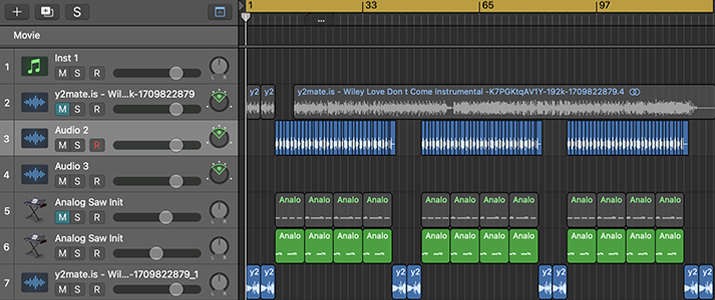
Track one project window
I started by downloading the MP3 file of the YouTube video and chopping it up in the project window. I find this way of sampling more effective as programs like Sampler and Serato Sampler can be less accurate when finding a particular chop of the song you want for your final piece. I also find this way of sampling more effective as the need to add more drums is very minimal as I am just rearranging the current drums in the track; adding more percussion to the song would overload the track with too much noise and take away the ‘raw’ Grime sound.
After chopping the sample up, I added a bass as the one from the original sample did not resonate enough in the final mix. I used the ES2 synthesiser plugin as my starting point for the mix. I wanted to make a smooth gliding bass so I chose the preset in the top left corner ‘Analog Saw Initv’. From there, I was able to adjust the synth to a sine wave, I then altered the attack and the drive of the bass, then I changed the glide knob to 130 MS so I created a smooth glide sound. These settings paired with the bassline I chose complimented the main sample well. To finish the beat I used the initial intro to the track as an intro/hook to balance the song.
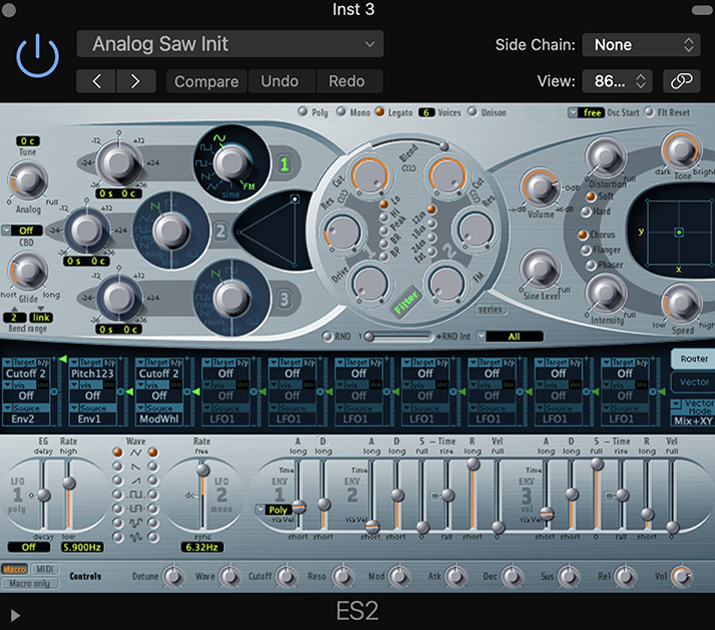
ES2 window
For the second track for the project I wanted to sample Zhaine (2019)’s track ‘La, La, La’.
Zhaine – La, La, La
When sampling this track I did a similar thing to the first song I made where I sliced the sample directly into the arrangement window.
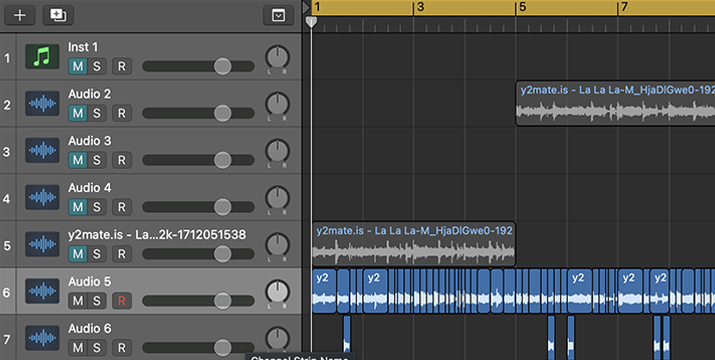
Track two project window
I find it much easier to chop samples this way as you have a more hands on approach to the audio file. I chopped an 8 bar from the intro and then another 8 bar from the first part of the song that included a vocal; this way I had a 16 bar audio file to chop up. This part took some time for me as I usually create several chops and then decipher which one I wanted to have as my final track. After making my final decision the track was done. I did not feel the need to add a bassline as the bass from the original sample had a very dense sound and was still prominent in the mix. This was the first track on the EP that I wanted to have a vocal for, so I chose one of my favourite grime sets to sample from. It is a sixty minute live session with rappers like BBK, Lethal Bizzle, Tempa T, and Dizzee Rascal.
Grime Takeover on #SixtyMinutesLive –
Tempa T and Skepta rap together
I chose the part of the video where Tempa T and Skepta rap together, this appears at roughly the sixth minute of the video. I felt this part was one of the better parts of the set and it really encapsulated the grime sound and energy that I am going with for this project. Once I downloaded the video and chopped which part of the video I wanted to use for the vocal, I ran the audio through the online site ‘Vocal Remover’.
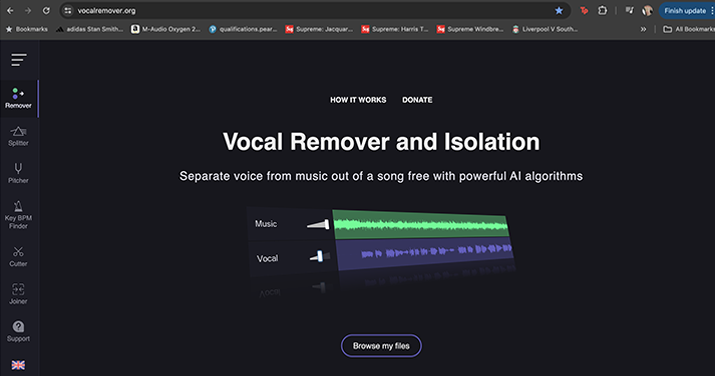
Vocal remover
Vocal Remover is an AI tool which separates the vocal cleanly from any audio clip you put into it. Once analysing the track, it will offer you the instrumental back with the vocal also, both of these come in handy when finding the accurate BPM when editing them.
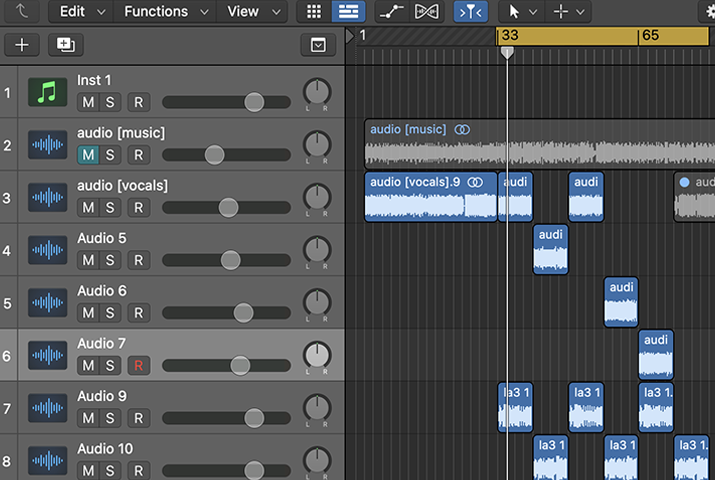
Mixing audio final
I put the vocal stem from Vocal Remover into a separate Logic Pro X file and then I added the beat also. Once I added both files and aligned them so the BPM was correct, I started mixing them. The mixing process was quite minimal, I added a vocal EQ to both rappers verses and had to chop both of them as there was a big contrast in volume from either verse. After doing this, plus playing around with the levels of each rapper's verse, the track was ready to go.
For the final track I wanted to sample Ashanti (2010) track ‘Rain on Me’.
Ashanti – Rain on Me
I felt that if you slowed this track down, the brass and drums sounds could easily be manipulated into a really good sounding Grime track. I started by chopping up the track and using two 8 bars from the intro, one with just the backing track and one with Ashanti singing a little as a nice vocal chop. I chopped the track up in a similar fashion to the previous tracks on the tape. Once I found my preferred sounding chop I continued making the beat.
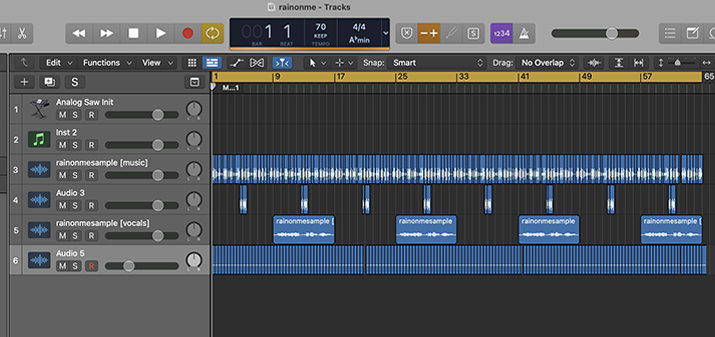
Track three arrangement window
For the vocals I decided to use Joe James’ (2020) video ‘Gotham Freestyle’. At the end of this music video he has a section where he freestyles on a beat and I think this verse is really good. The skippy flow and skit like bars are exactly the vibe I want to go with for this tape.
Joe James - Gotham Freestyle
I separated the vocals the same way I did for the previous track, using Vocal Remover. Once I found the correct BPM for the original vocals, I had to slightly adjust them as the freestyle was at 133 BPM but I wanted all the tracks to be 140 BPM. I used the flex tool and set it to monophonic, this made it easier to manipulate the audio as a package instead of using the time stretching tool, which might have led to other audio quality issues. Once this was done, I added in the beat that I made prior and mixed them together. Again, not too much was done to vocals apart from slight vocal EQ and some compression, it was more of an issue with the levels. Once it was mixed, the track was complete.
For the performance, I planned to incorporate all the tracks together and perform it as a package. I would do this by adding all the current stems I had for each track and putting them all in Ableton Live. With the help of an MPC Mini Keyboard, I would assign all the different stems to separate keys on the keyboard and then create different chops while doing so. I planned to play the tape as normal for the first track, but then for the final two songs I would merge the two vocals together (playing in time one after the other), but then also chop their corresponding beats too. I think this will sound good and also create the Grime energy that I am planning to get across to the listener.
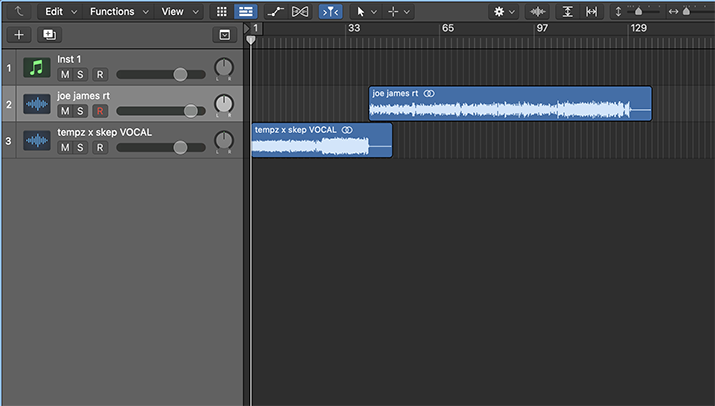
Combining vocals window
This is what the arrangement view looked like once I assigned all the correct MIDI components up with the overall track/performance. I tried to make it as simple as possible because I did not want to over complicate the process as I might make mistakes whilst performing.
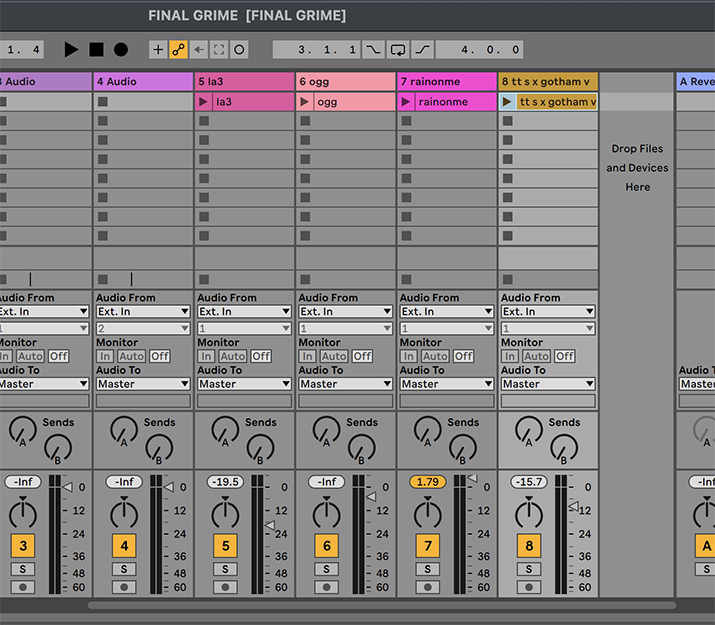
Ableton arrangement window
I used the ‘MIDI’ function in Ableton Live to do this. I assigned all the channels of the stems I wanted to play on the piano keys, and the rest of the faders onto the 8 knobs on the keyboards (volume and autofilter).

Ableton mapping window
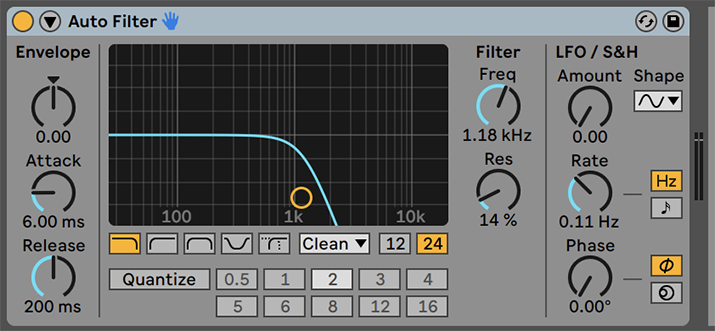
Auto filter window
I only used these live audio editing techniques as they were similar to ones of CDJs/Decks and that is the vibe I was going for, mainly because grime music is played off DJ decks. This selection of mapping can be seen below and also which hardware I used for this performance.
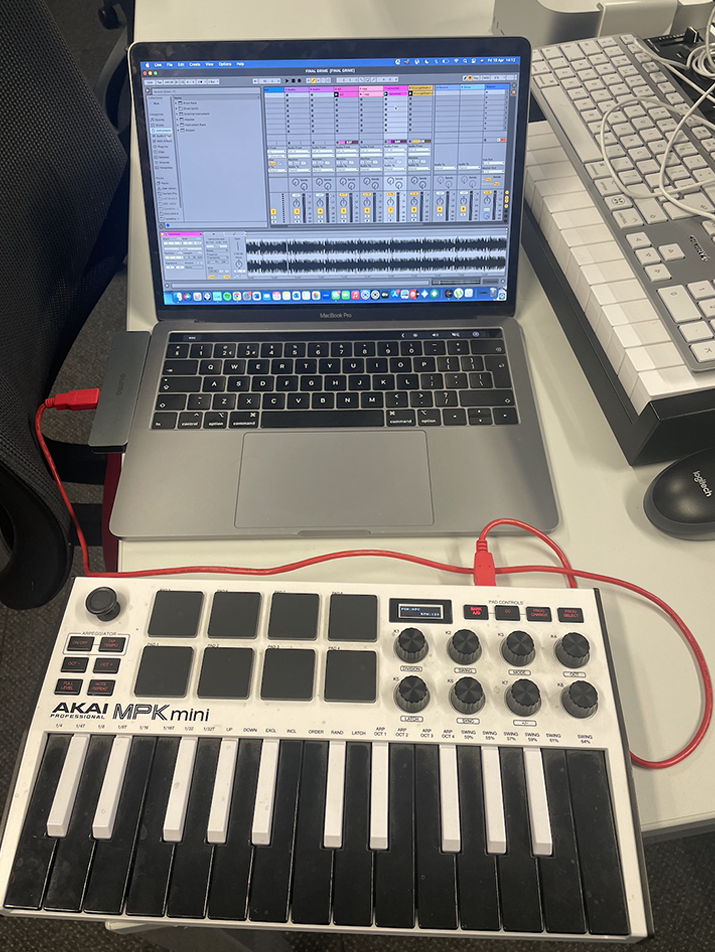
Laptop with Midi keyboard
On the day of the performance I was surprisingly not too nervous as I practised well and knew that even if I made a mistake then I could make it work another way as my tracks were fairly flexible (the key and BPM of the tracks were nearly the exact same). During the performance I made a few mistakes but tried not to show it in my face to keep up the continuity of the track. I just did what I planned to do originally where I chopped it in and out and then put it back in time at the right time and this worked, it did not go completely wrong and I am grateful for that!
My performance
In conclusion, I have found this project really interesting to explore and I think my research into it has helped me even more in understanding the importance of the early grime figureheads, even the lesser known ones now. The simple/basic yet effective production techniques I have learnt I will definitely keep in my work as I want this genre to be my main genre from now. In my own music I basically produce this genre already, so I felt it was important to take time out to research and almost pay homage to how and why producers are here today creating what they are. I think if I was to make this project again, I would get an old school grime artist to come in and perform as I usually talk to them once I post an edit online so that goal is not too unattainable. Another thing is that I think I would also perform on decks, I planned to do this originally but if I had a longer amount of tracks on the EP (6-8), then that would not have been such a bad idea. Overall, I have found this such a great topic to research; my interest in Grime is like an interest I have in no other genre, so I felt it was only right to do it for my final project.
Here are the three finished tracks I made for my EP ‘The Mellow Side Of Grime’.